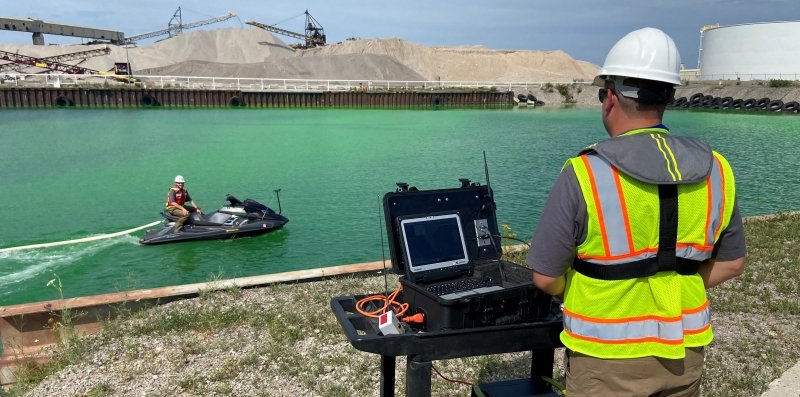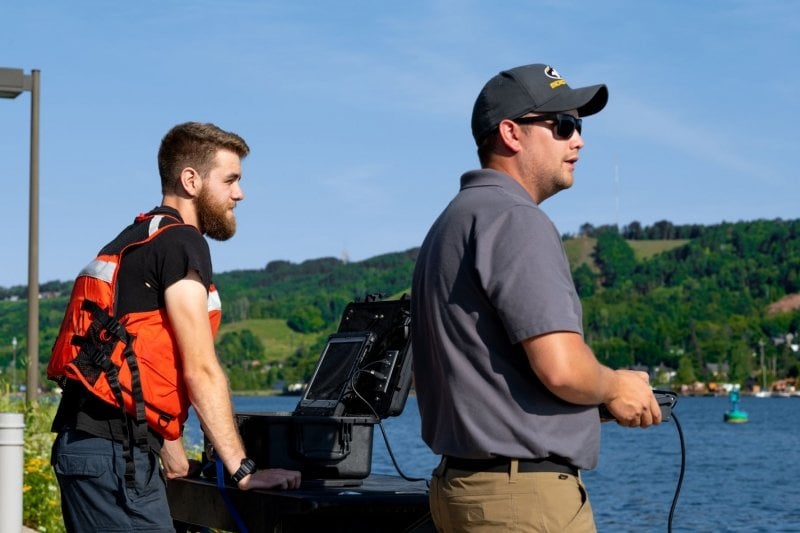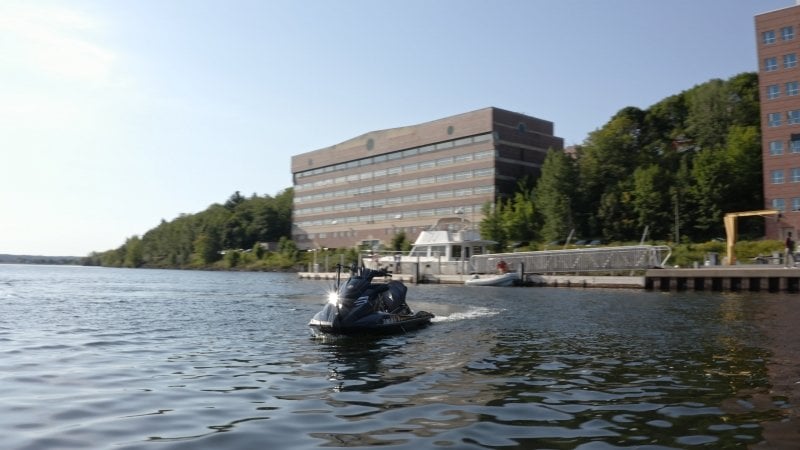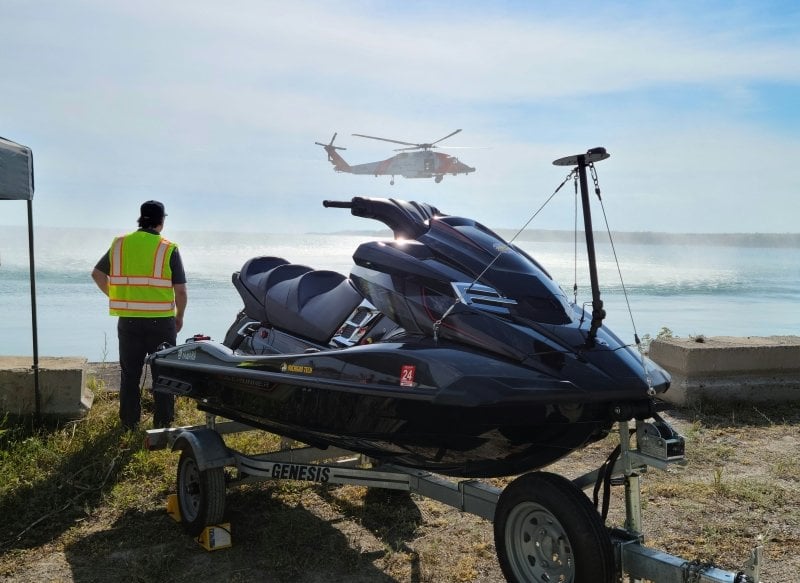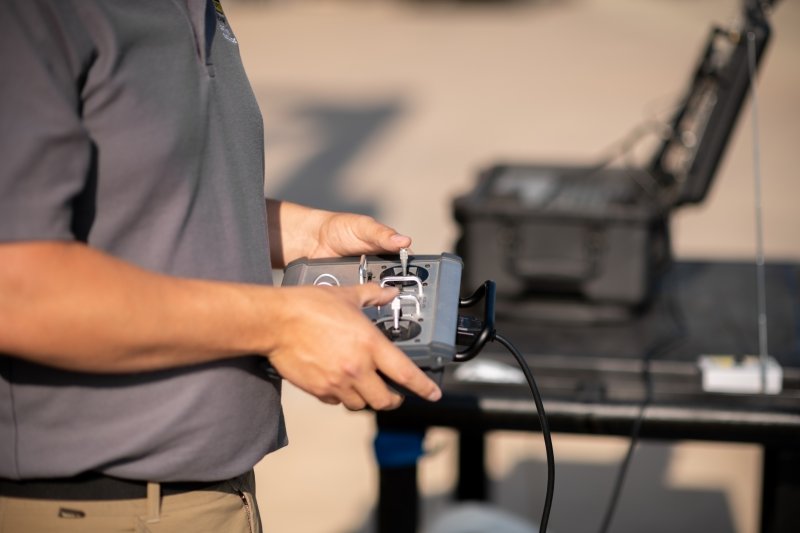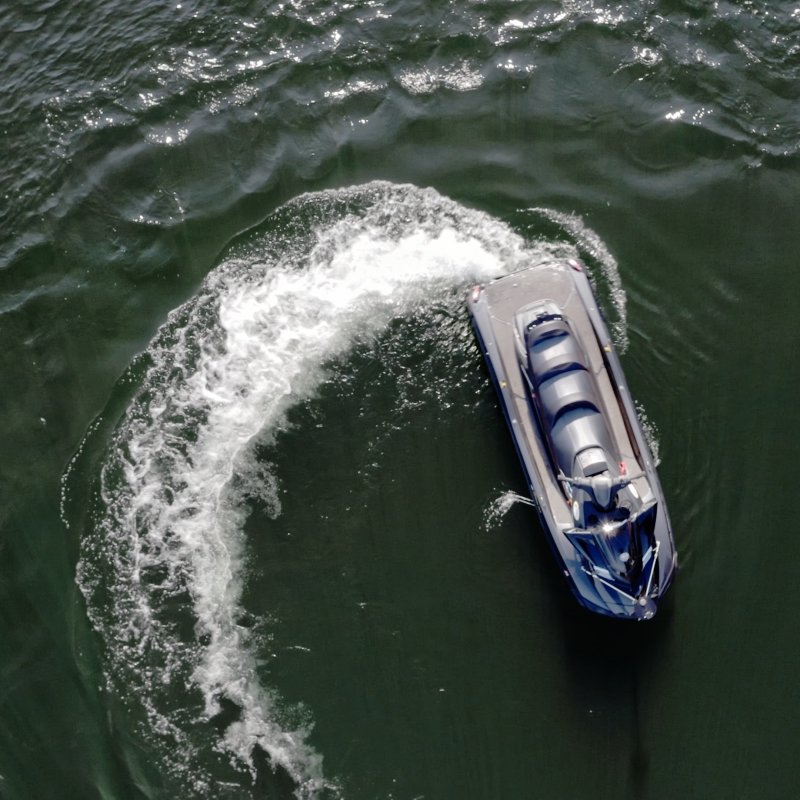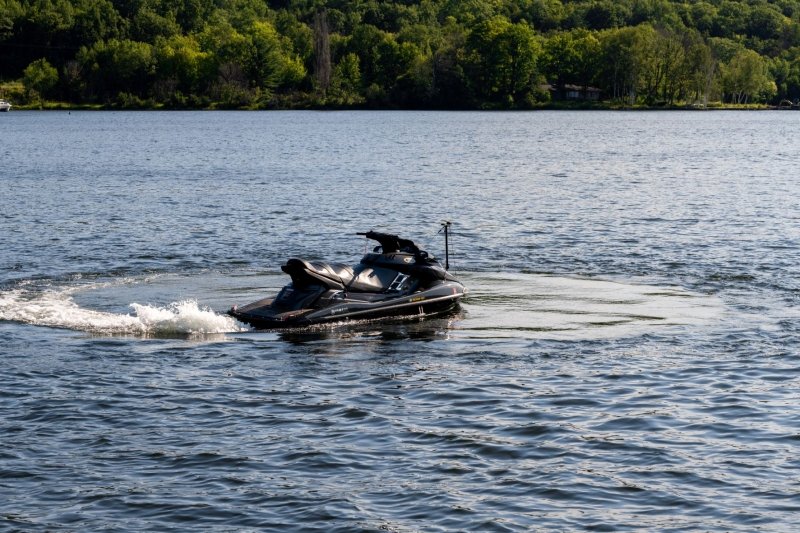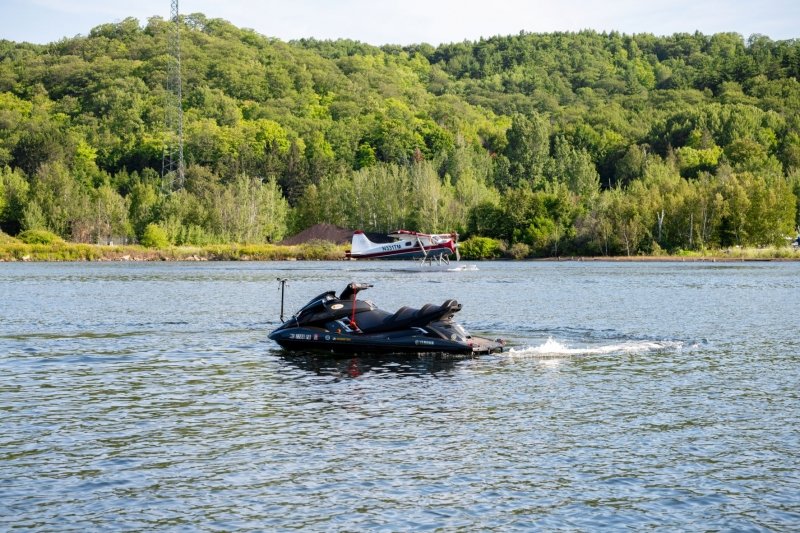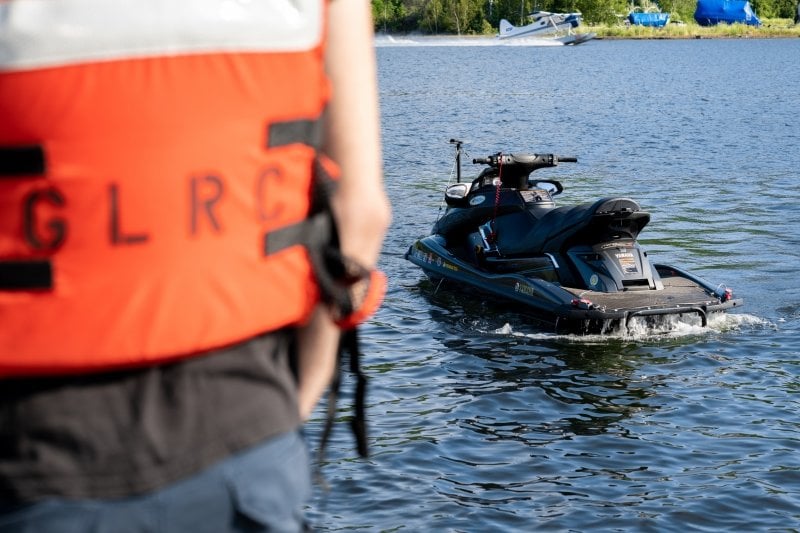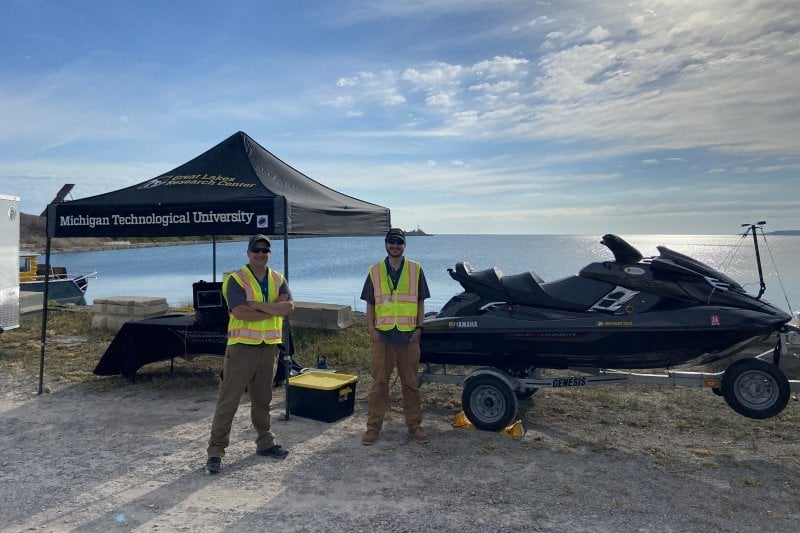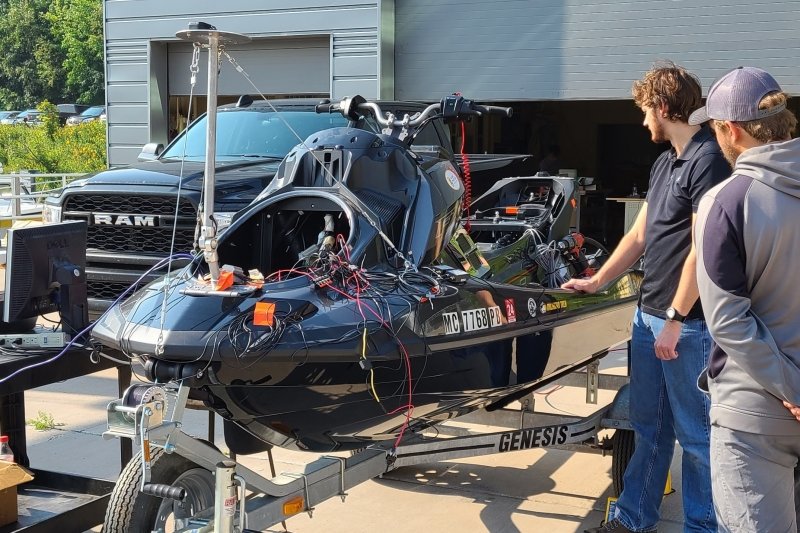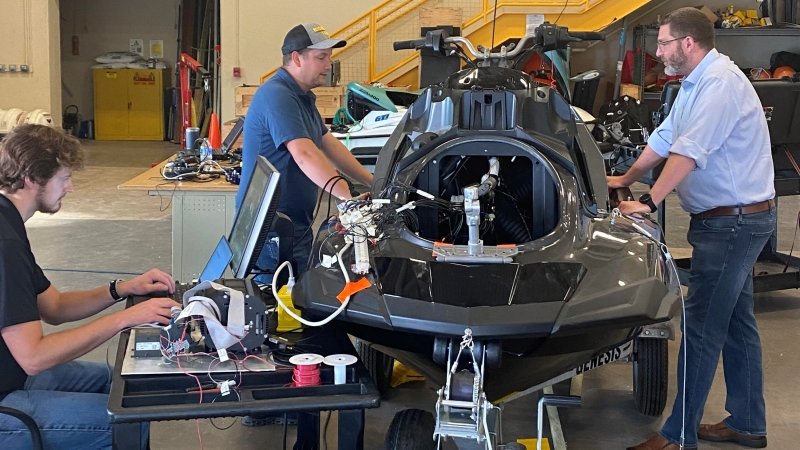Researchers at the Great Lakes Research Center (GLRC), with support from Michigan Tech faculty and students, have been developing an autonomous surface vessel. The platform being used for development is a Yamaha FX Cruiser SVHO, a personal watercraft (PWC). A custom developed embedded controller housed under the hood acts as the communication hub and control center for all jetski functions. An autopilot system developed by UAV Navigation works alongside the controller to provide guidance for navigation and ship-to-shore communication. The integrated system makes the vehicle capable of unmanned, autonomous operation; while maintaining the PWC’s ability to be driven manually by a human operator.
Controlling the PWC’s primary functions, such as starting and shutting off the engine, throttle, directional shifting (forward, neutral, reverse), is accomplished with the embedded controller directly linked into the PWC’s internal communication system. Vehicle steering is controlled by an industrial linear actuator attached to an auxiliary steering cable that is connected to the jet nozzle. In addition to communicating with the internal system of the PWC, the embedded controller also acts as the interface to the UAV Navigation autopilot system. The embedded controller interprets outputs from the autopilot system and initiates the corresponding desired behavior from the watercraft.
The initial integration of the UAV Navigation autopilot system was completed in summer of 2021; once integrated the performance of the system was first verified in a lab setting. Lab tests included demonstrating that the engine can be started and stopped, the throttle manipulated, and the steering actuated via commands sent from the remotely located control hub. Prior to any field deployments, GLRC researchers were trained by UAV Navigation on their software and autopilot system to ensure safe and efficient operation of the vessel. Summer 2022 saw the first field deployment of the PWC in the MARS testbed, at which time performance of the system was tested in a real world setting.
After gaining confidence in the system through field deployments, in July of 2022 the GLRC brought the PWC to the USCG sponsored oil spill response demonstration in Rogers City, MI. During the event the platform was used to showcase how an unmanned system could be used to efficiently contain an oil spill, while removing human operators from a potentially dangerous environment. In September of 2022, the GLRC hosted the first ever Smart Ships Coalition (SSC) workshop, the workshop included a dockside demonstration of the PWC to showcase marine autonomy and inspire discussion in the various working groups of the workshop. The final platform showcase in 2022 was a demonstration at the LakeBed 2030 conference in Traverse City, MI to highlight how autonomous systems can help streamline our mapping efforts and act as a force multiplier in a resource limited environment.
An antenna mast and instrument rack were designed and installed on the vehicle to provide permanent mounting locations for autopilot system components and high definition cameras to provide real time remote vision capabilities. In addition to providing mounting for the current system components, additional mounting options are available for adding new capabilities to support scientific applications, educational outreach, and marine autonomy research within the MARS testbed. A multibeam sonar system will be added to the PWC in the future, contingent upon funding, to enable capabilities such as high resolution bathymetric surveying, habitat mapping, and fish population assessment.
The GLRC will continue to pursue relevant funding opportunities to help build out the capabilities of the autonomous watercraft asset with plans to add intelligent features such as collision avoidance and path planning based on machine learning and artificial intelligence. The vehicle will be made available for collaborative use by students, instructors, research faculty and staff, and external partners.

